10 Benefits Of Green Beans, Nutrition Profile, & Side Effects
Soak in the goodness of the nutrient-rich food to keep various illnesses at bay.
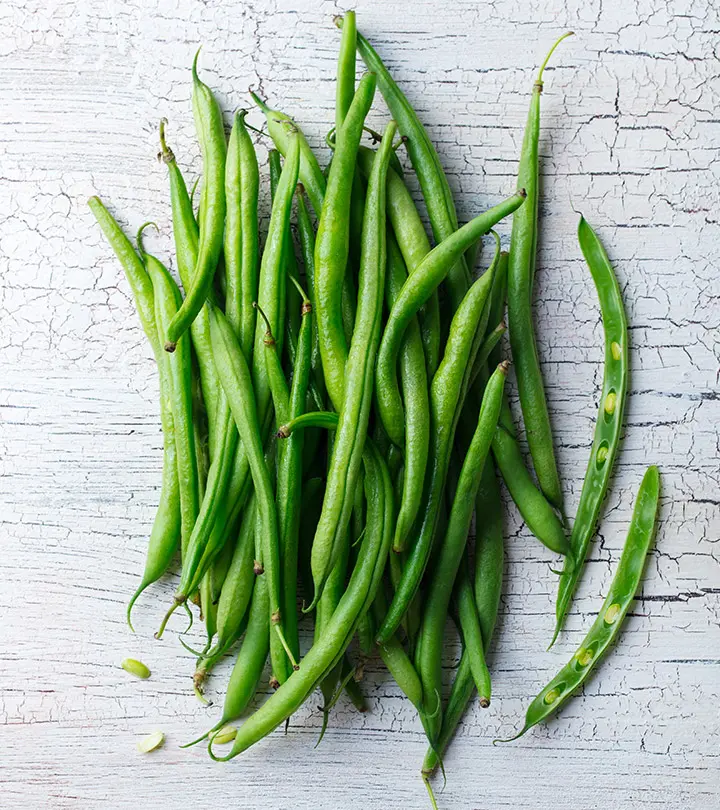
Image: ShutterStock
Green beans are loved by people all over the world and are used in many delicacies. Green beans’ benefits are backed by research, which says that they can cut down the risk of some cancers, boost your vision, help prevent some congenital disabilitiesi An abnormality or defect caused at or before birth. Examples include neural tube defects and limb deficiencies. , and lower the risk of heart disease. All this can be attributed to lutein and zeaxanthin, potent compounds found in them (1).

Green beans, or string beans, are rich in vital nutrients and vitamins K, C, and A (2). Vitamin K plays an important role in blood clotting and helps build bones (3). Vitamin A boosts vision, while vitamin C is a potent antioxidant – and both vitamins contribute to the growth and development of all body tissues (4), (5).
In this article, you will learn more about green beans’ nutrition facts, how they benefit you, and how you can add them to your diet. Scroll down to know more!
 Know Your Ingredient: Green Bean
Know Your Ingredient: Green BeanWhat Is It?
A long, crunchy, vine-grown vegetable that tastes earthy and slightly bitter.
What Are Its Benefits?
It reduces inflammation, boosts immunity, regulates blood sugar levels, and improves vision.
Who Can Consume It?
Anyone can consume this except people with irritable bowel syndrome.
How Often?
You can eat two servings of this vegetable daily.
Caution
Avoid eating uncooked green beans as they can cause nausea, diarrhea, or vomiting.
In This Article
What Are The Health Benefits Of Green Beans?
What are green beans good for in your body? The fiber content of the beans helps prevent various forms of cancer, heart disease, and diabetes. The fiber also promotes digestive health, the calcium in the beans promotes bone health, while lutein and zeaxanthin boost vision (6), (7), (1). Let’s look in detail about the various ways green beans benefit your health.
1. May Help Combat Cancer

Intake of beans, in general, has been linked to a lower risk of breast cancer. This could be attributed to the high fiber content of the beans (8).
High intake of green beans can also cut the risk of colorectal cancer. These beans are rich in various bioactive compounds that offer protection against cancer. The non-digestible carbs in green beans are fermented by the gut bacteria, leading to anti-inflammatory actions (9).
These beans also have a low glycemic index. This means they are digested and absorbed slower, which can help manage blood sugar levels and prevent spikes. This has also been associated with low cancer risk. Green beans contain saponins, gamma-tocopherol, and phytosterols, which are all compounds with anti-carcinogenici Any substance or agent that prevents the development of cancer cells in the body, such as antioxidants. properties (9).
Green beans are abundant in chlorophyll, which also has a role to play in cancer prevention. Chlorophyll binds with certain compounds that may cause cancer, thereby hindering their absorption in the gastrointestinal tract. This can potentially prevent cancer (10).
2. May Promote Heart Health
Intake of legumes (which greens are a part of) has been linked to a reduced risk of coronary heart disease.
This can be attributed to the fiber and folate in beans (11).
They also contain vitamin B12, which, in combination, helps reduce plasma homocysteine levels. Homocysteine is a particular amino acid occurring in the body, the elevated levels of which have been linked to heart disease (11).
The magnesium in green beans may also have a role to play in preserving heart health (12).
The fiber in green beans (and other vegetables included) can help lower cholesterol and blood pressure and even promote blood vessel function. This may invariably promote heart health (13).
3. May Help Control Diabetes
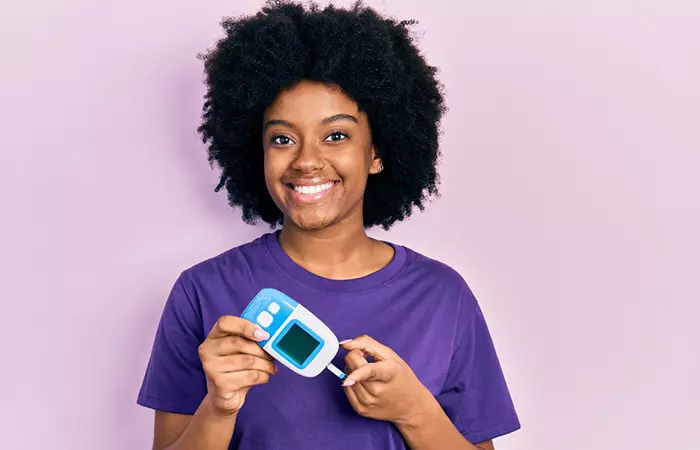
Studies show that green beans can induce beneficial metabolic effects in individuals with diabetes (14). A study investigated the potential of green beans in managing diabetes. They were found to lower blood sugar levels by 65% in diabetic rats and also lowered harmful substances like cholesterol (14).
Although vegetables, in general, are healthy, those containing more starch may not be advisable for people with diabetes. Green beans are nonstarchy (they contain less starch). These contain fewer carbs and are an ideal addition to a diabetes diet (15).
Having a cup of beans a day, along with a low-glycemic diet, may help lower blood sugar levels and even cut heart disease risk in people with diabetes (16).
4. May Promote Gastrointestinal Health
The fiber in the beans plays a major role here. Inadequate fiber intake has often been linked to constipation. Fiber also boosts the overall gastrointestinal function (17).
Beans, in general, contain both soluble and insoluble fiber, with the insoluble type being the most prominent (75%). This type of fiber moves fast through your digestive system. This not only promotes a healthy digestive tract but also helps prevent most forms of digestive cancer (18).
Consuming green beans could also help treat the symptoms of irritable bowel syndromei A common intestinal disorder that affects the stomach and digestive system. Symptoms include pain, constipation and flatulence. . This can be attributed to the fiber content in the beans (19).
5. May Strengthen Bones
Beans, in general, are a good source of calcium. Calcium can cut osteoporosisi A condition in which new bone tissues fail to form as required and replace old ones, causing brittle bones that are prone to fracture. risk (20).
Green beans are also rich in vitamin K, which is another nutrient essential for strong bones (21).
The only possible downside of beans in this regard is their phytate content. Phytates are substances in beans that may hinder the absorption of certain nutrients, including calcium. In other words, phytates are anti-nutrients.
However, you can reduce the phytate content in the beans by soaking them in water for a few hours before cooking them in fresh water (22).
6. May Help Maintain Ideal Weight

Are green beans healthy to eat during a weight loss plan? Green beans’ calorie content is very low. A cup of steamed green beans contains just about 44 calories (23). They could be a smart way to amp up your meal.
Though green beans haven’t been directly associated with weight loss, their low calorie count may help in this regard.
7. May Promote Immunity
Green beans contain carotenoids and are an excellent source of vitamin A. A cup of green beans offers close to 20% of the daily value for vitamin A. The nutrient fights inflammation and boosts your immune system (24).
8. May Improve Vision
Are green beans good for you if you are dealing with poor vision problems? Yes, Green beans are a rich source of lutein and zeaxanthin, two important antioxidants that promote vision health. Studies show how these nutrients can prevent age-related macular degeneration (AMD), an eye disease that damages the central part of the retina, and cataracts, a cloudy area in the lens of your eye (25). Both these conditions result in poor vision.
A higher intake of lutein and zeaxanthin can also help prevent AMD in people who could be genetically predisposed to the disease (26).
These effects could be attributed to the lutein and zeaxanthin in green beans, which may help increase the macular pigmenti A term used to collectively refer to three compounds found at the central retina (macula) which are important for proper visual function. density, which is the concentration of macular pigment in the central part of the retina and is responsible for sharp, detailed vision (27).
9. May Help Treat Depression

Intake of fruits and vegetables, in general, has been associated with a lowered risk of depression. Green beans are rich in vitamin C and B vitamins, which are known to promote mental health (28).
These effects were observed to be more pronounced with the intake of raw fruits and vegetables (28).
Beans, in general, are also rich in magnesium, zinc, and the amino acids glutamine and tyrosine. All of these were found to boost mental health by enhancing the production of neurotransmitters, chemical messengers that transmit signals between nerve cells to regulate brain functions and bodily processes (29).
The protein in the beans can also boost your body’s amino acid profile, thereby having a positive effect on your brain function and mental health (29).
Green beans also contain chromium, another essential nutrient for treating depression and promoting brain health (30).
10. Could Be Beneficial During Pregnancy
Green beans are rich in folate, a nutrient that is crucial during pregnancy. Folate is responsible for the production of red blood cells in the human body. It also plays a role in developing the nervous system of the embryo. Adequate folate reduces the risk of neural tube defects that affect the brain and spinal cord in infants (31).
 Trivia
TriviaKey Takeaways
- Green beans may help lower blood sugar levels and improve heart health.
- Always look for tight, smooth, and bright green beans.
- Consume green beans in moderation due to their high vitamin K, which may interfere with blood-thinning medications.
- Green beans can be added to your salads and sandwiches for a fresh and crunchy element.
What Is The Nutritional Profile Of Green Beans?
Green beans are a low-calorie vegetable with a great nutritional value. A cup of raw green beans contains: 30 calories, 1.83g of protein, 0.22g of fat, 6.97g of carbs, 2.7g of dietary fiber, and 3.26g of sugar. It is a wonderful source of vitamins C, A, folate, and K, minerals like potassium, and beneficial antioxidants like beta-carotene.
| Nutrient | Unit | 1Value per 100 g | Data points | Std. Error | 1 cup 1/2″ pieces = 100.0g | 10.0 beans (4″ long) = 55.0g |
|---|---|---|---|---|---|---|
| Water | g | 90.32 | 165 | 0.27 | 90.32 | 49.68 |
| Energy | kcal | 31 | — | — | 31 | 17 |
| Energy | kJ | 131 | — | — | 131 | 72 |
| Protein | g | 1.83 | 104 | 0.04 | 1.83 | 1.01 |
| Total lipid (fat) | g | 0.22 | 14 | 0.03 | 0.22 | 0.12 |
| Ash | g | 0.66 | 144 | 0.01 | 0.66 | 0.36 |
| Carbohydrate, by difference | g | 6.97 | — | — | 6.97 | 3.83 |
| Fiber, total dietary | g | 2.7 | 4 | 0.05 | 2.7 | 1.5 |
| Sugars, total | g | 3.26 | 4 | 0.23 | 3.26 | 1.79 |
| Sucrose | g | 0.36 | 4 | 0.16 | 0.36 | 0.2 |
| Glucose (dextrose) | g | 1.51 | 4 | 0.11 | 1.51 | 0.83 |
| Fructose | g | 1.39 | 4 | 0.2 | 1.39 | 0.76 |
| Lactose | g | 0 | 4 | 0 | 0 | 0 |
| Maltose | g | 0 | 4 | 0 | 0 | 0 |
| Galactose | g | 0 | 4 | 0 | 0 | 0 |
| Starch | g | 0.88 | 4 | 0.14 | 0.88 | 0.48 |
| Minerals | ||||||
| Calcium, Ca | mg | 37 | 153 | 1 | 37 | 20 |
| Iron, Fe | mg | 1.03 | 155 | 0.07 | 1.03 | 0.57 |
| Magnesium, Mg | mg | 25 | 151 | 0 | 25 | 14 |
| Phosphorus, P | mg | 38 | 140 | 0 | 38 | 21 |
| Potassium, K | mg | 211 | 154 | 4 | 211 | 116 |
| Sodium, Na | mg | 6 | 154 | 0 | 6 | 3 |
| Zinc, Zn | mg | 0.24 | 152 | 0.02 | 0.24 | 0.13 |
| Copper, Cu | mg | 0.069 | 161 | 0.004 | 0.069 | 0.038 |
| Manganese, Mn | mg | 0.216 | 150 | 0.008 | 0.216 | 0.119 |
| Selenium, Se | µg | 0.6 | 1 | — | 0.6 | 0.3 |
| Fluoride, F | µg | 19 | 36 | 6.6 | 19 | 10.4 |
| Vitamins | ||||||
| Vitamin C, total ascorbic acid | mg | 12.2 | 9 | 0.7 | 12.2 | 6.7 |
| Thiamin | mg | 0.082 | 102 | 0.002 | 0.082 | 0.045 |
| Riboflavin | mg | 0.104 | 102 | 0.003 | 0.104 | 0.057 |
| Niacin | mg | 0.734 | 12 | 0.03 | 0.734 | 0.404 |
| Pantothenic acid | mg | 0.225 | 4 | 0.023 | 0.225 | 0.124 |
| Vitamin B-6 | mg | 0.141 | 4 | 0.002 | 0.141 | 0.078 |
| Folate, total | µg | 33 | 8 | 2 | 33 | 18 |
| Folic acid | µg | 0 | — | — | 0 | 0 |
| Folate, food | µg | 33 | 8 | 2 | 33 | 18 |
| Folate, DFE | µg | 33 | — | — | 33 | 18 |
| Choline, total | mg | 15.3 | — | — | 15.3 | 8.4 |
| Betaine | mg | 0.1 | — | — | 0.1 | 0.1 |
| Vitamin B-12 | µg | 0 | — | — | 0 | 0 |
| Vitamin B-12, added | µg | 0 | — | — | 0 | 0 |
| Vitamin A, RAE | µg | 35 | — | — | 35 | 19 |
| Retinol | µg | 0 | — | — | 0 | 0 |
| Carotene, beta | µg | 379 | 77 | 48 | 379 | 208 |
| Carotene, alpha | µg | 69 | 70 | 10 | 69 | 38 |
| Cryptoxanthin, beta | µg | 0 | 21 | 0 | 0 | 0 |
| Vitamin A, IU | IU | 690 | — | — | 690 | 380 |
| Lycopene | µg | 0 | 6 | 0 | 0 | 0 |
| Lutein + zeaxanthin | µg | 640 | 6 | 50 | 640 | 352 |
| Vitamin E (alpha-tocopherol) | mg | 0.41 | — | — | 0.41 | 0.23 |
| Vitamin E, added | mg | 0 | — | — | 0 | 0 |
| Vitamin D (D2 + D3) | µg | 0 | — | — | 0 | 0 |
| Vitamin D | IU | 0 | — | — | 0 | 0 |
| Vitamin K (phylloquinone) | µg | 43 | — | — | 43 | 23.6 |
| Amino Acids | ||||||
| Tryptophan | g | 0.019 | — | — | 0.019 | 0.01 |
| Threonine | g | 0.079 | — | — | 0.079 | 0.043 |
| Isoleucine | g | 0.066 | — | — | 0.066 | 0.036 |
| Leucine | g | 0.112 | — | — | 0.112 | 0.062 |
| Lysine | g | 0.088 | — | — | 0.088 | 0.048 |
| Methionine | g | 0.022 | — | — | 0.022 | 0.012 |
| Cystine | g | 0.018 | — | — | 0.018 | 0.01 |
| Phenylalanine | g | 0.067 | — | — | 0.067 | 0.037 |
| Tyrosine | g | 0.042 | — | — | 0.042 | 0.023 |
| Valine | g | 0.09 | — | — | 0.09 | 0.05 |
| Arginine | g | 0.073 | — | — | 0.073 | 0.04 |
| Histidine | g | 0.034 | — | — | 0.034 | 0.019 |
| Alanine | g | 0.084 | — | — | 0.084 | 0.046 |
| Aspartic acid | g | 0.255 | — | — | 0.255 | 0.14 |
| Glutamic acid | g | 0.187 | — | — | 0.187 | 0.103 |
| Glycine | g | 0.065 | — | — | 0.065 | 0.036 |
| Proline | g | 0.068 | — | — | 0.068 | 0.037 |
| Serine | g | 0.099 | — | — | 0.099 | 0.054 |
| Flavonoids | ||||||
| (+)-Catechin | mg | 0 | 11 | 0 | 0 | 0 |
| (-)-Epigallocatechin | mg | 0 | 11 | 0 | 0 | 0 |
| (-)-Epicatechin | mg | 0 | 11 | 0 | 0 | 0 |
| (-)-Epicatechin 3-gallate | mg | 0 | 11 | 0 | 0 | 0 |
| (-)-Epigallocatechin 3-gallate | mg | 0 | 11 | 0 | 0 | 0 |
| (+)-Gallocatechin | mg | 0 | 11 | 0 | 0 | 0 |
| Flavones | ||||||
| Apigenin | mg | 0 | 5 | 0 | 0 | 0 |
| Luteolin | mg | 0.1 | 8 | 0.13 | 0.1 | 0.1 |
| Flavonols | ||||||
| Kaempferol | mg | 0.5 | 23 | 0.06 | 0.5 | 0.2 |
| Myricetin | mg | 0.1 | 9 | 0.12 | 0.1 | 0.1 |
| Quercetin | mg | 2.7 | 30 | 0.22 | 2.7 | 1.5 |
Source: USDA, Beans, snap, green, raw
Looking at the nutritional profile, grabbing a pack of green beans from your nearest supermarket is an absolute no-brainer. The next section discusses a few common varieties of green beans that you may want to try.
What Are The Different Types Of Green Beans?
There are over 500 different varieties of green beans recognized globally. Here are the three most commonly used green beans:
- String Beans
They are also known as snap beans. They have long, bright green, and slender (round or flat) pods with a fibrous string running down their length. Although typically green, they can also be yellow and purple.
- French Beans
These are also known as haricots verts. They have a slightly dull green color and do not have a hard string along their slender bodies. They have a mildly sweet flavor.
- Runner Beans
They are native to South America and have flat, large, and slightly curved pods. They are generally green but can also be yellow and purple.
Keep reading to know how to pick good-quality beans and store them in good condition.
How To Choose And Store Green Beans
- Check the color. Look for beans that are bright green. A yellowish or brownish tint may mean they are spoiled. If you are buying canned beans, do check the expiry date.
- Check the surface. The skin of the pod must be tight and smooth. If the skin has creases or lumps, you may want to shove it aside.
- Ensure they snap. If the pod is firm, it must snap. Bend the pod and wait until you sense the snapping sound. This also means the beans are ripe.
- Check for the size. Pods that are too large or excessively thick are a big no. They may not have that fresh bean flavor. Go for those that are medium-sized.
You can store unwashed fresh green bean pods in a plastic bag in the refrigerator crisper. They will stay fresh for about seven days.
Freezing green beans also works. You must first steam them for 2 to 3 minutes. Remove the steamed beans from the heat and allow them to cool. Transfer them to freezer bags and store them in the freezer. Steamed frozen beans can last a long time if stored well.
Consuming green beans regularly is the way to enjoy their benefits. Including them in your diet is quite simple.
How To Include Green Beans In Diet

If you want to know how to prepare green beans for your meals, we are here to help you. The simplest way is to eat green beans raw. You can just pop in the beans. Or you may also include the raw beans in your vegetable salad. Here are some more quick and easy green bean recipes:
- Add the beans to hummus.
- Roast the beans along with olive oil and other spices. Roasted beans or even sautéed beans would make for a delectable curry or side dish beans.
- Boil the beans or stir-fry them for flavorful side dishes.
To enhance the flavor of green beans, consider adding minced garlic during cooking for a rich taste, or roast whole cloves alongside the beans for a milder flavor. Squeezing fresh lemon juice overcooked beans brightens their taste with a refreshing zing.
Felipe Stewart, a blogger, spoke about a healthy yet delicious way of consuming green beans in his blog. He said, “Green beans, although technically a legume, are easy for me to enjoy. Lightly steamed, they make the perfect snack” (i).
 Quick Tip
Quick TipGreen Beans Recipe Ideas
1. Green Beans Salad
What You Need
- 1 pound green beans, trimmed
- 1/3 cup extra-virgin olive oil
- ½ cup balsamic vinegar
- 2 teaspoons of chopped parsley
- 1 clove garlic, minced
- 1 small sweet onion
- 1 teaspoon salt
- 1 teaspoon white sugar
- Freshly ground black pepper to taste
Direction
- Bring a large pot of salted water to a boil.
- Add green beans and cook uncovered for 7-10 minutes until tender but firm.
- In a large bowl, whisk together vinegar, olive oil, onion, garlic, parsley, sugar, salt, and pepper.
- Drain the green beans and mix them with the dressing while still warm.
- Let marinate at room temperature for at least 1 hour.
- Serve at room temperature or chilled.
2. Roasted Green Beans
What You Need
- 1 pound green beans
- 2 teaspoons extra virgin olive oil
- ¼ teaspoon fine sea salt
Direction
- Preheat the oven to 425°F.
- Wash and trim the green beans and pat them dry with a clean towel.
- Place the green beans on a baking sheet, drizzle with olive oil, and sprinkle with salt.
- Toss the beans with your hands until evenly coated, then arrange them in a single layer.
- Roast for 14–16 minutes until crisp-tender and golden.
- Transfer to a serving dish and enjoy with your choice of accompaniments.
3. Garlic Butter Green Beans
What You Need
- 500 g green beans
- 2 cloves garlic
- 2 tablespoons of butter
- Salt and pepper
- Juice of half a lemon
Direction
- Trim the ends off the green beans.
- Bring a pot of water to a boil, insert the steamer basket with the beans, and cover. Steam for 3–4 minutes.
- Melt butter and minced garlic in a frying pan over medium-high heat.
- Add the steamed beans to the frying pan and sauté for 2-3 minutes.
- Season with salt and pepper, then squeeze the juice of half a lemon over the beans.
You can experiment in various other ways. But before you do that, you may want to consider their side effects.
What Are The Side Effects Of Green Beans?
The major adverse effects of green beans could be attributed to the presence of lectins and phytates. These compounds, called anti-nutrients, are designed to protect the plant from infections. In the human body, these can inhibit the absorption of certain nutrients, including calcium, iron, zinc, and magnesium (32).
Another adverse effect is that they are high in some indigestible starches that may not be tolerated by people with gastric problems like bloating, gas, or those with symptoms of IBS (irritable bowl syndrome) (33).
Soaking or boiling green beans before eating can deactivate most of these anti-nutrients (22).
Another concern is the vitamin K content in green beans. The nutrient forms blood clots and can interfere with blood-thinning medications, including Warfarin (34).
Green beans are often compared to other similar vegetables like asparagus and lima beans. Let us take a look at how they compare in the next section.
Green Beans Vs. Other Similar Vegetables
When compared to green beans, asparagus and lima beans have many differences. For instance, asparagus has a thicker, crunchier stalk compared to tender, juicy green beans. It also tends to have a more distinctive, slightly grassy flavor. On the other hand, lima beans, with their creamy and slightly nutty taste, are larger and softer than green beans.
As for their nutrition, green beans are richer in fiber compared to asparagus, which is higher in folate (35), (36). Lima beans provide even more fiber along with protein and iron (37). That said, all these vegetables are versatile in cooking and can be used in stir-fries, casseroles, stews, and soups. You may choose any of them based on your nutritional needs.
Infographic: 5 Reasons To Add Green Beans To Your Diet
Green beans are used in different dishes across the globe due to their crunchy texture and earthy taste. They are rich in zinc and vitamins K, C, and A, which may improve heart health and aid in weight loss. Check out the infographic below to learn why you should incorporate them into your diet.

Illustration: StyleCraze Design Team
Green beans, also known as string beans, are rich in important vitamins, minerals, and nutrients. These not only boost your cardiovascular, digestive, and bone health, but also are effective in preventing diabetes and certain cancers. Rich in amino acids and vitamin B12 complex, these green beans are deemed safe to be consumed while pregnant and are good for your general immunity as well. However, these should be had in moderation to avoid any possible side effects like drug interactions and gastric discomfort.
Frequently Asked Questions
Are green beans keto?
Green beans are very low in carbs – 100 grams of the beans contain just about 7 grams of carbs. Hence, the beans can be part of a keto diet.
Can green beans cause gas?
Some anecdotal evidence suggests that green beans may cause gas (which also states that pre-soaking the beans before cooking can prevent this). There is less research here, though.
Are French beans and green beans the same thing?
Yes, green beans have various names, like French beans, haricots verts, string beans, bush beans, pole beans, garden beans or snap beans. Runner beans and wax beans are slightly different but are equally nutritious.
What’s healthier peas or green beans?
Green peas benefits come from their carbohydrate content, which may improve digestive and kidney health, gastrointestinal function, and help you gain weight (38). While green beans are rich in vitamins, especially vitamin A which promotes immunity and regulates cell growth (39). So, both are healthy in their own way.
What’s healthier broccoli or green beans?
This depends on the consumer’s preference as broccoli and green beans have a similar nutrition content. Both are rich in calcium, vitamin K, and protein.
Can you eat the ends of green beans?
Yes! Though many people snap off the ends before consuming beans, it is perfectly edible and acceptable to eat the end part.
What is the white stuff on my green beans?
The possible white stuff on the green beans can be fungus, a powdery mildew. It is advised to get rid of that part of the vegetable covered in fungus before consuming it as a whole.
Illustration: Benefits Of Green Beans, Nutrition Profile, & Side Effects
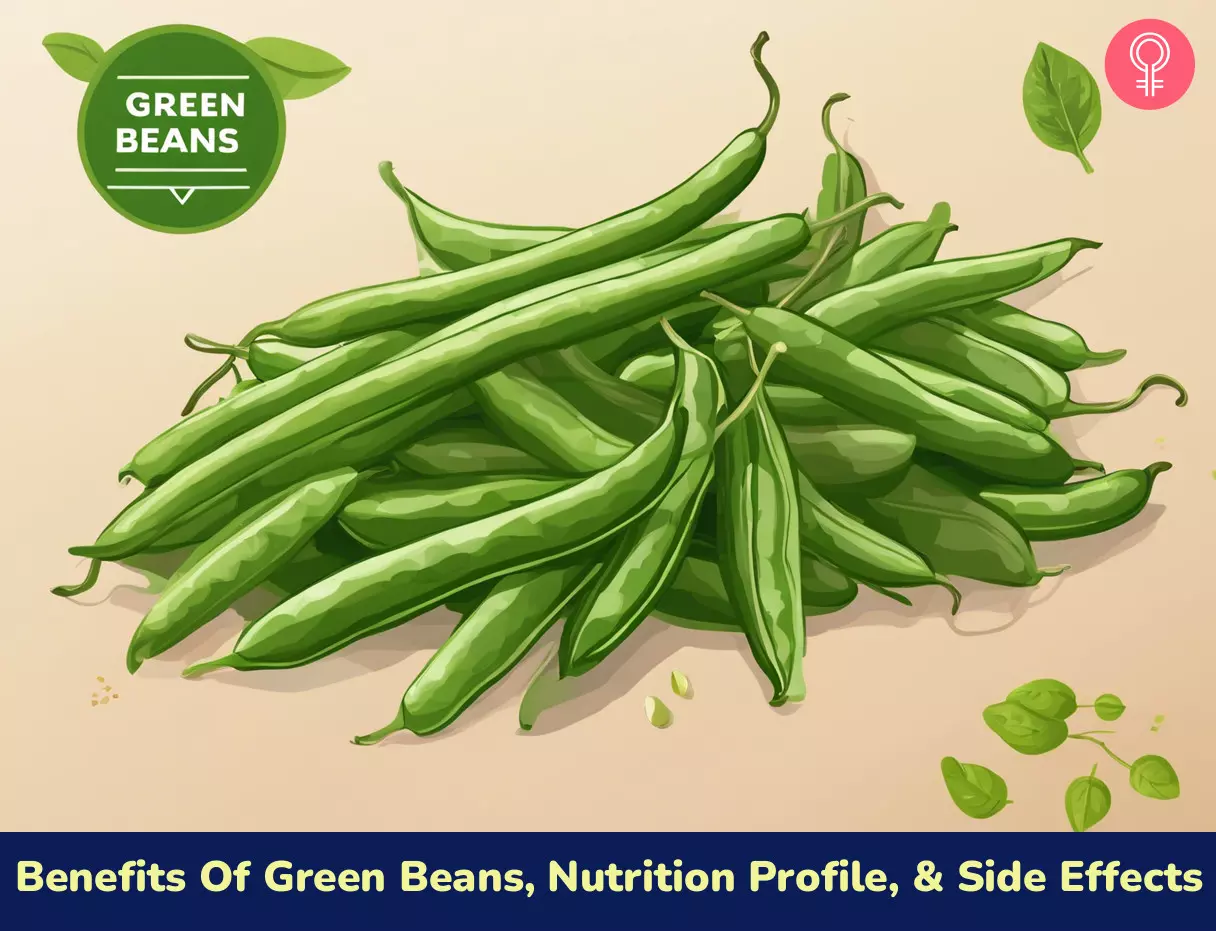
Image: Stable Diffusion/StyleCraze Design Team
References
Articles on StyleCraze are backed by verified information from peer-reviewed and academic research papers, reputed organizations, research institutions, and medical associations to ensure accuracy and relevance. Read our editorial policy to learn more.
Articles on StyleCraze are backed by verified information from peer-reviewed and academic research papers, reputed organizations, research institutions, and medical associations to ensure accuracy and relevance. Read our editorial policy to learn more.
- The Pharmacological Effects of Lutein and Zeaxanthin on Visual Disorders and Cognition Diseases, Molecules, US National Library of Medicine, National Institutes of Health.
https://pubmed.ncbi.nlm.nih.gov/28425969/ - Health Benefits of Plant-Based Nutrition: Focus on Beans in Cardiometabolic Diseases, US National Library of Medicine, National Institutes of Health.
https://pmc.ncbi.nlm.nih.gov/articles/PMC7915747/ - Vitamin K Nutrition and Bone Health, US National Library of Medicine, National Institutes of Health.
https://pmc.ncbi.nlm.nih.gov/articles/PMC7399911/ - Role of Vitamin A in the Immune System, US National Library of Medicine, National Institutes of Health.
https://pmc.ncbi.nlm.nih.gov/articles/PMC6162863/ - Vitamin C (Ascorbic Acid), US National Library of Medicine, National Institutes of Health.
https://www.ncbi.nlm.nih.gov/books/NBK499877/ - The health benefits of dietary fiber: beyond the usual suspects of type 2 diabetes, cardiovascular disease, and colon cancer, US National Library of Medicine, National Institutes of Health.
https://pmc.ncbi.nlm.nih.gov/articles/PMC3399949/ - Essential Nutrients for Bone Health and a Review of their Availability in the Average North American Diet, US National Library of Medicine, National Institutes of Health.
https://pmc.ncbi.nlm.nih.gov/articles/PMC3330619/ - Intake of bean fiber, beans, and grains and reduced risk of hormone receptor‐negative breast cancer: the San Francisco Bay Area Breast Cancer Study, Cancer Medicine, US National Library of Medicine, National Institutes of Health.
https://www.ncbi.nlm.nih.gov/pmc/articles/PMC5943543/ - High Dry Bean Intake and Reduced Risk of Advanced Colorectal Adenoma Recurrence among Participants in the Polyp Prevention Trial, The Journal of Nutrition, US National Library of Medicine, National Institutes of Health.
https://www.ncbi.nlm.nih.gov/pmc/articles/PMC1713264/ - Chlorophyll and Chlorophyllin, Oregon State University.
https://lpi.oregonstate.edu/mic/dietary-factors/phytochemicals/chlorophyll-metallo-chlorophyll-derivatives - Legume Consumption and Risk of Coronary Heart Disease in US Men and Women, JAMA Internal Medicine.
https://jamanetwork.com/journals/jamainternalmedicine/fullarticle/649612 - Cereal grains and legumes in the prevention of coronary heart disease and stroke: a review of the literature, European Journal of Clinical Nutrition, US National Library of Medicine, National Institutes of Health.
https://pubmed.ncbi.nlm.nih.gov/16670693/ - Fruits and vegetables for heart health: More is better, Harvard Medical School.
https://www.health.harvard.edu/heart-health/fruits-and-vegetables-for-heart-health-more-is-better - Non-polar metabolites of green beans (Phaseolus vulgaris L.) potentiate the antidiabetic activity of mesenchymal stem cells in streptozotocin-induced diabetes in rats, US National Library of Medicine, National Institutes of Health.
https://pubmed.ncbi.nlm.nih.gov/35034354/ - Carbohydrate Counting & Diabetes, National Institute of Diabetes and Digestive and Kidney Diseases, National Institutes of Health.
https://www.niddk.nih.gov/health-information/diabetes/overview/healthy-living-with-diabetes?dkrd=/health-information/diabetes/overview/diet-eating-physical-activity/carbohydrate-counting+/health-information/diabetes/overview/diet-eating-physical-activity - Beans may help control blood sugar in people with diabetes, Harvard Medical School.
https://www.health.harvard.edu/diseases-and-conditions/beans-may-help-control-blood-sugar-in-people-with-diabetes - Health benefits of dietary fiber, Wiley Online Library.
https://onlinelibrary.wiley.com/doi/full/10.1111/j.1753-4887.2009.00189.x - Get the Facts on Fiber, American Institute for Cancer Research.
https://www.aicr.org/resources/blog/ask-the-dietitian-get-your-facts-right-on-fiber-and-whole-grains/ - Irritable Bowel Syndrome (IBS), University of Rochester Medical Center.
https://www.urmc.rochester.edu/encyclopedia/content?contenttypeid=85&contentid=p00384 - Bone Health for Life: Health Information Basics for You and Your Family, National Institute of Arthritis and Musculoskeletal and Skin Diseases.
https://www.niams.nih.gov/health-topics/bone-health-and-osteoporosis - Green Beans, New York State of Opportunity.
https://www.agriculture.ny.gov/f2s/documents/TC_1.pdf - Effect of soaking and sprouting on iron and zinc availability in green and white faba bean (Vicia faba L.), Journal of Food Science and Technology, US National Library of Medicine, National Institutes of Health.
https://www.ncbi.nlm.nih.gov/pmc/articles/PMC4252429/ - How to Use Fruits and Vegetables to Help Manage Your Weight, Centers for Disease Control and Prevention.
https://www.cdc.gov/healthy-weight-growth/healthy-eating/fruits-vegetables.html?CDC_AAref_Val=https://www.cdc.gov/healthyweight/healthy_eating/fruits_vegetables.html - Role of Vitamin A In The Immune System, Journal of Clinical Medicine MDPI, US National Library of Medicine, National Institutes of Health
https://www.ncbi.nlm.nih.gov/pmc/articles/PMC6162863/ - Lutein and Zeaxanthin—Food Sources, Bioavailability and Dietary Variety in Age-Related Macular Degeneration Protection, Nutrients, US National Library of Medicine, National Institutes of Health.
https://www.ncbi.nlm.nih.gov/pmc/articles/PMC5331551/ - Genetic susceptibility, dietary antioxidants, and long-term incidence of age-related macular degeneration in two populations, Ophthalmology, US National Library of Medicine, National Institutes of Health.
https://pubmed.ncbi.nlm.nih.gov/24290803/ - Changes of macular pigment optical density in elderly eyes: a longitudinal analysis from the MARS study, International Journal of Retina and Vitreous, US National Library of Medicine, National Institutes of Health.
https://pubmed.ncbi.nlm.nih.gov/27847632/ - Intake of Raw Fruits and Vegetables Is Associated With Better Mental Health Than Intake of Processed Fruits and Vegetables, Frontiers in Psychology, US National Library of Medicine, National Institutes of Health.
https://www.ncbi.nlm.nih.gov/pmc/articles/PMC5902672/ - Nutrition and depression at the forefront of progress, Journal of Medicine and Life, US National Library of Medicine, National Institutes of Health.
https://www.ncbi.nlm.nih.gov/pmc/articles/PMC3539842/ - Dietary Chromium Supplementation for Targeted Treatment of Diabetes Patients with Comorbid Depression and Binge Eating, US National Library of Medicine, National Institutes of Health.
https://pmc.ncbi.nlm.nih.gov/articles/PMC4529062/ - All About Beans Nutrition, Health Benefits, Preparation and Use in Menus, North Dakota State University.
https://www.ndsu.edu/agriculture/extension/publications/all-about-beans-nutrition-health-benefits-preparation-and-use-menus - Are anti-nutrients harmful? Harvard School of Public Health.
https://nutritionsource.hsph.harvard.edu/anti-nutrients/ - Perceptions of flatulence from bean consumption among adults in 3 feeding studies, US National Library of Medicine, National Institutes of Health.
https://pmc.ncbi.nlm.nih.gov/articles/PMC3228670/ - Vitamin K, US National Library of Medicine, National Institutes of Health.
https://www.ncbi.nlm.nih.gov/books/NBK551578/ - Beans, snap, green, raw, USDA
https://fdc.nal.usda.gov/food-details/2346400/nutrients - Asparagus, green, raw, USDA
https://fdc.nal.usda.gov/food-details/2710823/nutrients - Lima beans, from canned, USDA
https://fdc.nal.usda.gov/food-details/2709850/nutrients - Review of the health benefits of peas (Pisum sativum L.)
https://pubmed.ncbi.nlm.nih.gov/22916813/ - Vitamin A, Harvard, school of public health
https://nutritionsource.hsph.harvard.edu/vitamin-a/
Read full bio of Madhu Sharma
Read full bio of Ravi Teja Tadimalla
Read full bio of Arshiya Syeda
Read full bio of Aparna Mallampalli







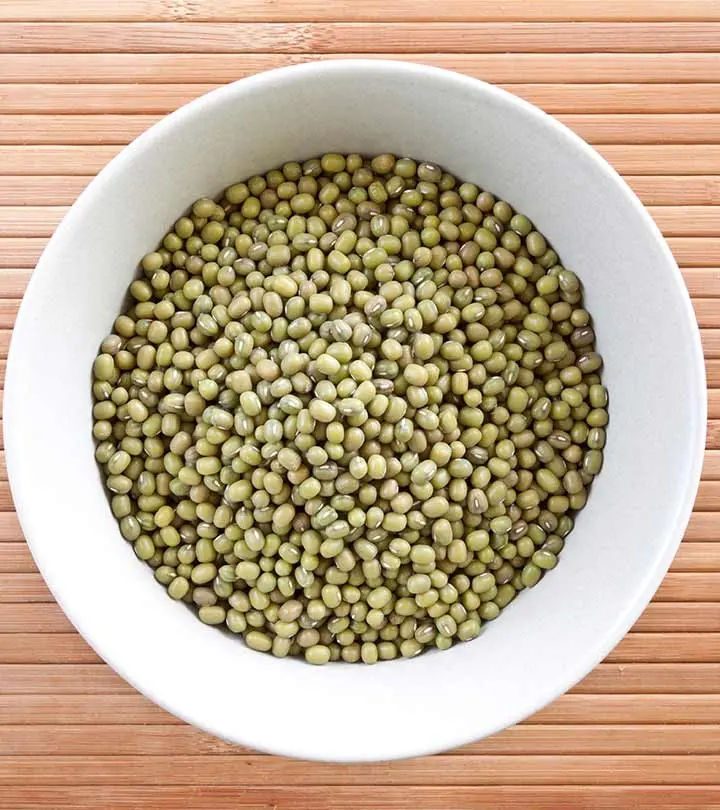
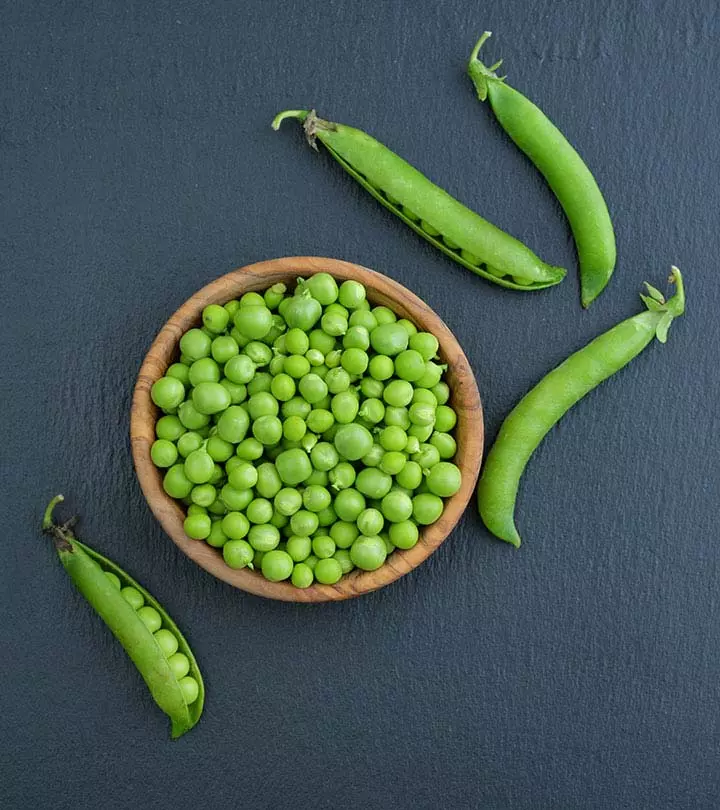

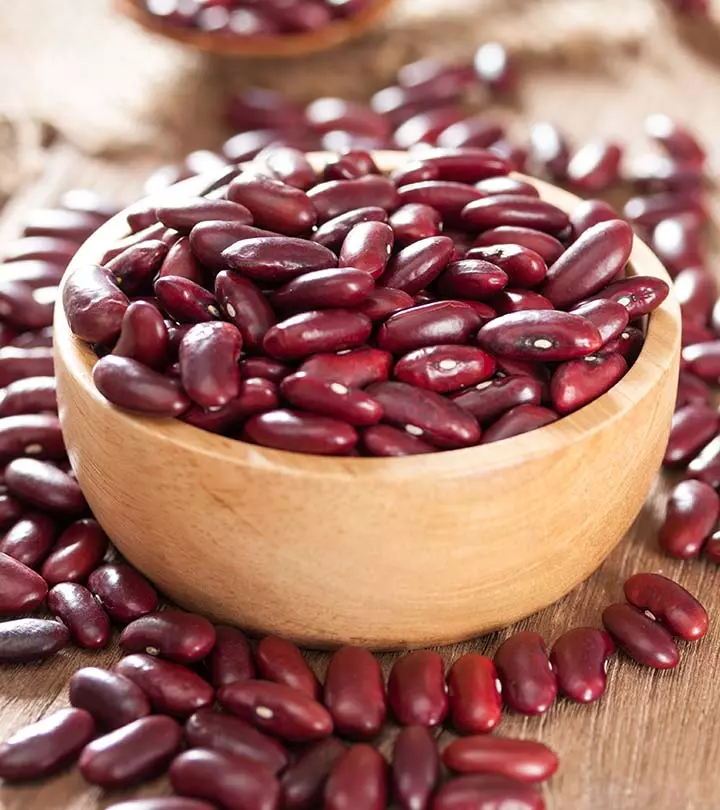

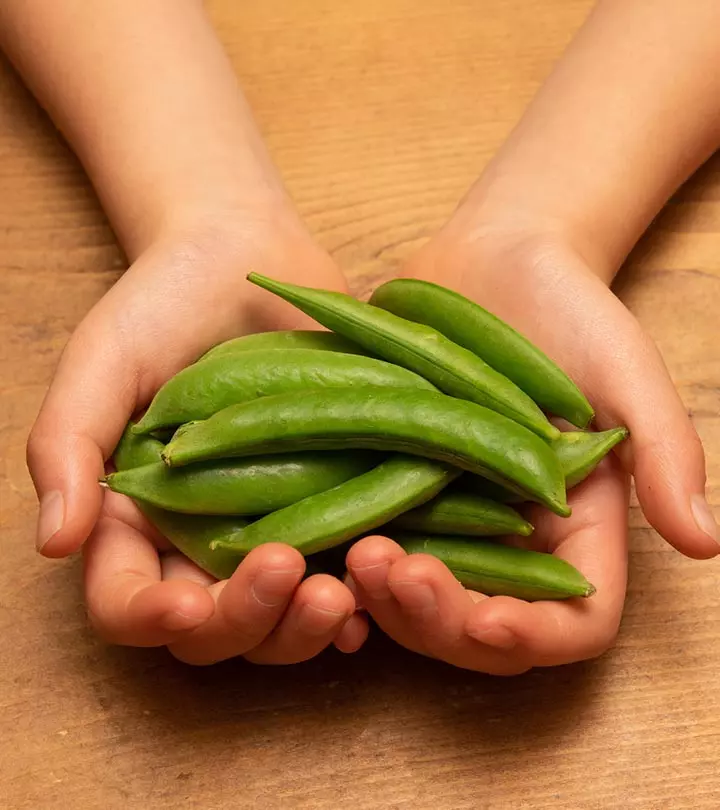
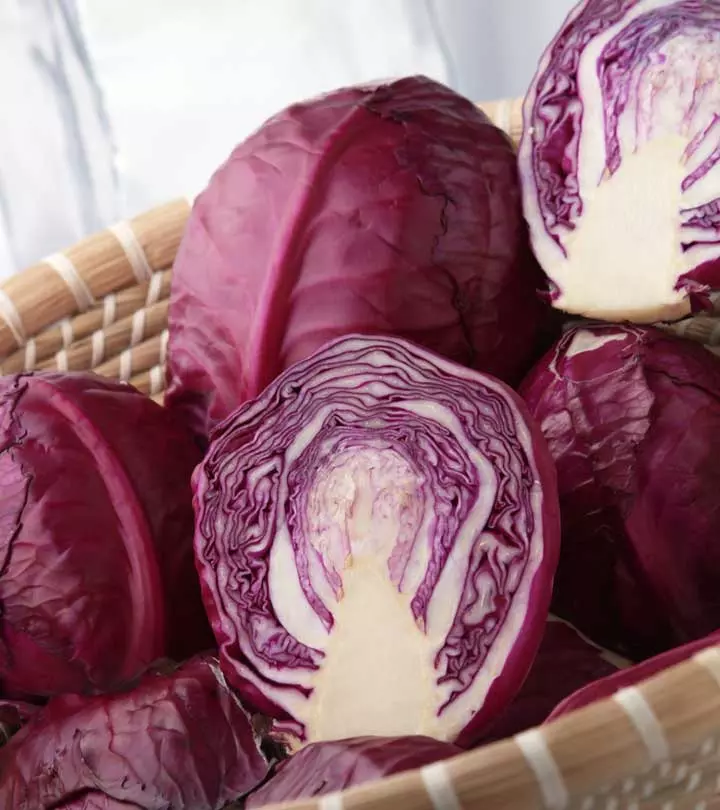
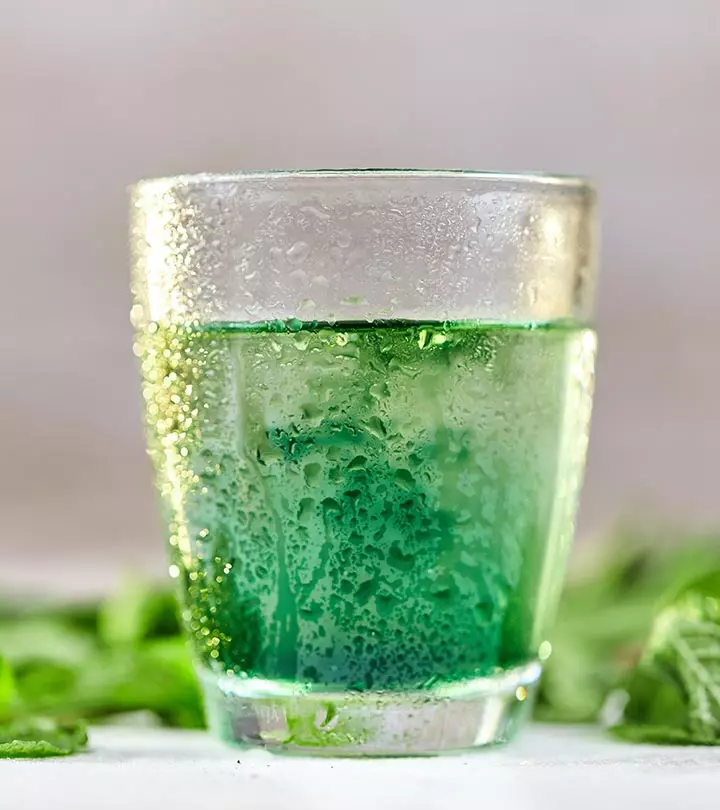
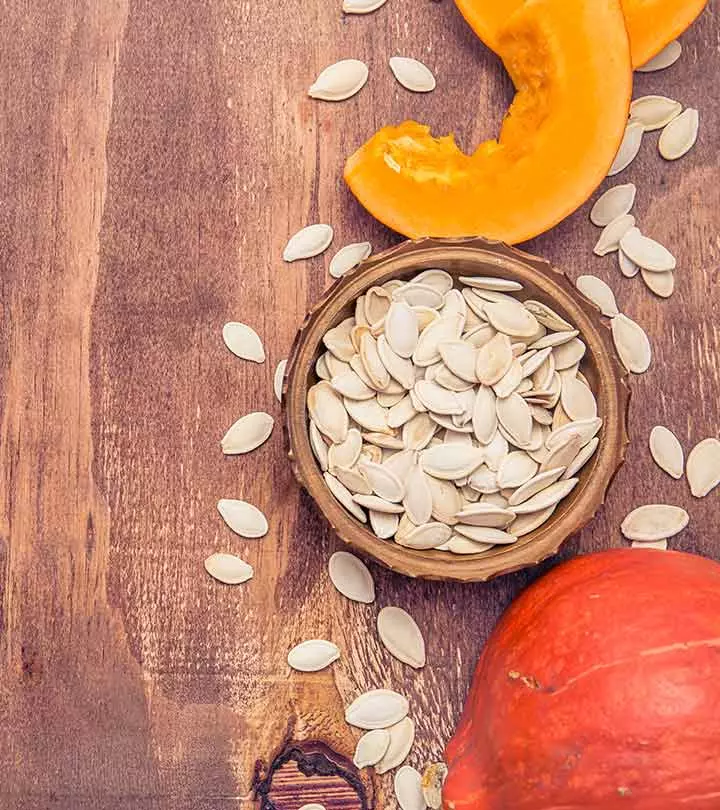

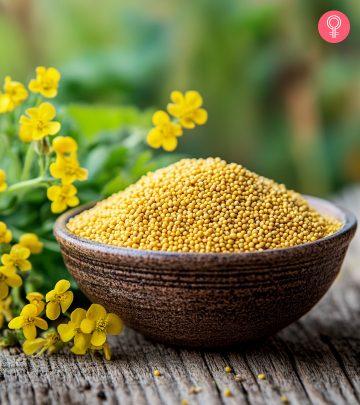
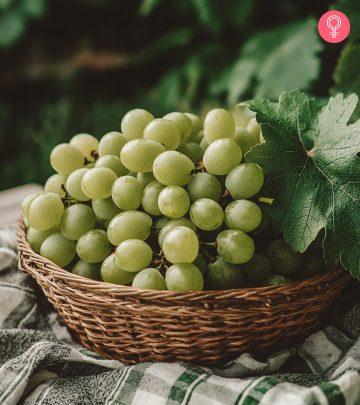
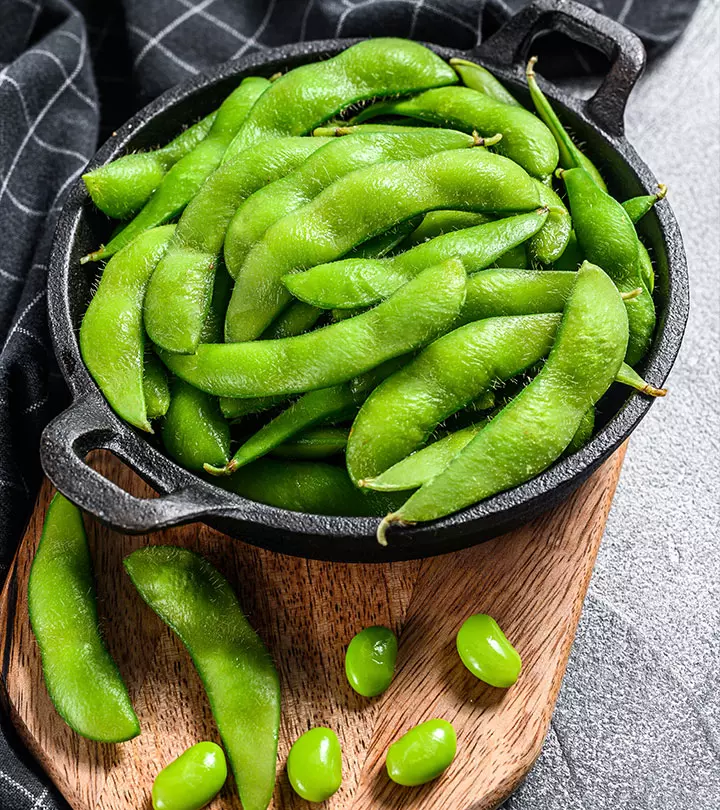

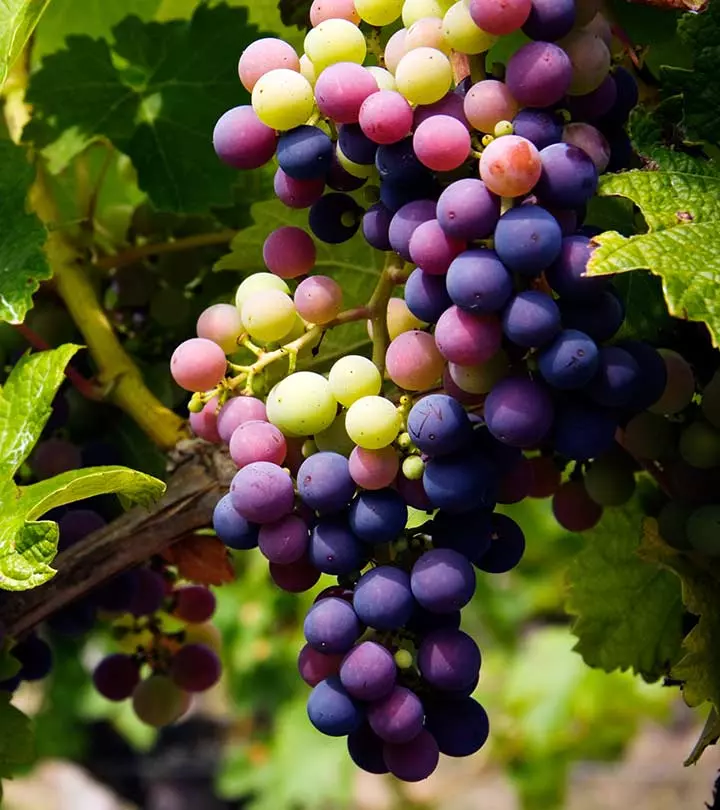
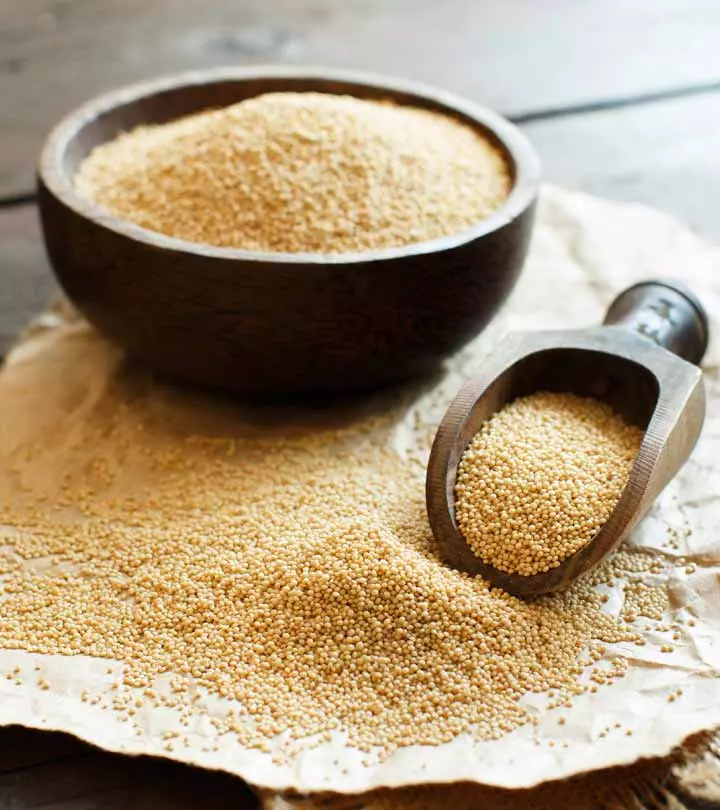


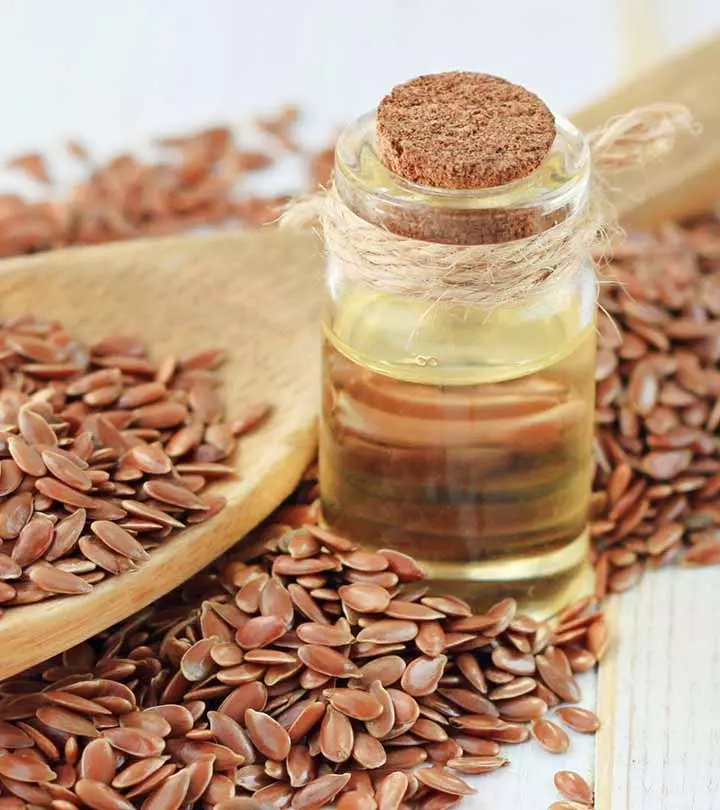
Community Experiences
Join the conversation and become a part of our empowering community! Share your stories, experiences, and insights to connect with other beauty, lifestyle, and health enthusiasts.